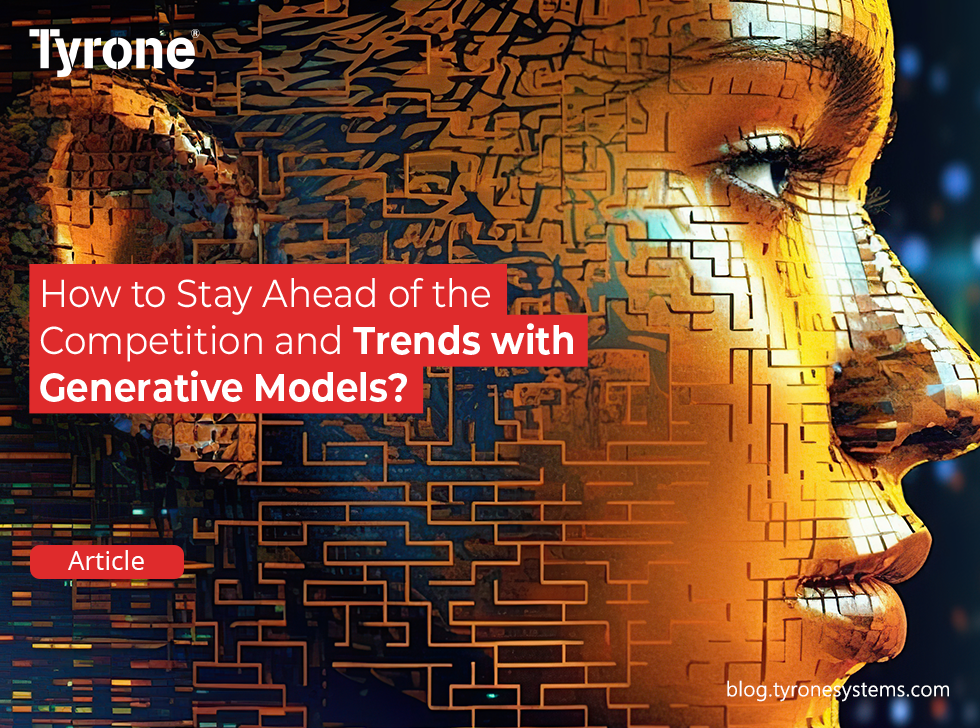Generative models are artificial intelligence that can create new data based on existing data. They can produce realistic and novel content, such as images, text, music, speech, code, and design. Generative models have many applications and use cases in various domains, such as marketing, software, entertainment, and innovation. This article will explore how generative models can help you stay ahead of the competition and trends in your field.
What are generative models, and how do they work?
Generative models are machine learning models that learn to generate more data that look like the data they were trained on. For example, a generative model trained on images of faces can generate new faces that have never been seen before. A generative model trained on text can generate new text that follows the style and topic of the training data.
Generative models use complex mathematical and computational techniques to learn the patterns and features of the data. One of the most common techniques is generative adversarial networks (GANs), which consist of two models: a generator and a discriminator. The generator tries to create fake data that can fool the discriminator, while the discriminator tries to distinguish between real and fake data. The two models compete with each other and improve over time, resulting in high-quality and realistic data.
Another popular technique is generative pre-trained transformers (GPTs), which are large language models that can generate text based on natural language requests. GPTs are trained on many unlabeled text data from various sources, such as books, websites, and social media. They can then generate text for different tasks, such as writing, summarizing, translating, answering questions, and conversing, with additional fine-tuning.

What are the benefits and applications of generative models?
Generative models can offer many benefits and applications for businesses and professionals creating content. Some of these include:
- Faster product development: Generative models can help you create prototypes, mockups, and designs for your products faster and cheaper than traditional methods. For example, you can use generative models to generate logos, icons, UI elements, and product features based on your specifications and preferences. You can also use generative models to test and optimize your products before launching them.
- Enhanced customer experience: Generative models can help you improve customer experience and engagement by providing personalized and relevant content. For example, you can use generative models to generate product recommendations, reviews, testimonials, and feedback based on your customer’s profile and behavior. You can also use generative models to create interactive and immersive content, such as games, videos, and virtual reality, that can entertain and educate your customers.
- Improved employee productivity: Generative models can help you boost employee productivity and creativity by automating and augmenting tedious and repetitive tasks. For example, you can use generative models to generate reports, presentations, emails, and documents based on your data and inputs. You can also use generative models to generate ideas, insights, and suggestions to inspire and assist your employees.
How do we stay ahead of the competition and trends with generative models?
Generative models are not just a technology or a business case; they are a vital part of a society where people and machines work together. Generative models can create new opportunities and challenges for businesses and professionals that need to adapt and innovate in a fast-changing world. Here are some tips on how to stay ahead of the competition and trends with generative models:
- Understand how generative models work and what they can do: Generative models are complex and evolving technologies that require much knowledge and skills to use and develop. You need to understand how generative models work, their strengths and limitations, and their ethical and social implications. You also need to know what generative models can do, their use cases and applications, and their best practices and standards.
- Experiment and explore with generative models: Generative models are powerful and versatile tools that can create a variety of novel and realistic content. It would help if you experimented with generative models to discover their potential and value. You can generate content based on your requests and inputs using existing generative models or services, such as ChatGPT, DALL·E, or GANbreeder. You can also create your generative models or customize existing ones using frameworks and platforms, such as TensorFlow, PyTorch, or OpenAI, to generate content based on your data and goals.
- Collaborate and co-create with generative models: Generative models are not meant to replace human creativity but to enhance and complement it. You must collaborate and co-create with generative models to achieve the best results. You can use generative models as assistants, partners, or sources of inspiration, depending on your needs and preferences. You can also use generative models to collaborate and co-create with others, such as your colleagues, customers, or peers, to generate more diverse and inclusive content.

Conclusion
Generative models are changing how we create and consume content, substantially impacting business and society. By understanding, experimenting, and collaborating with generative models, you can stay ahead of the competition and trends in your field. Generative models are not just a technology but a new form of expression and communication.












